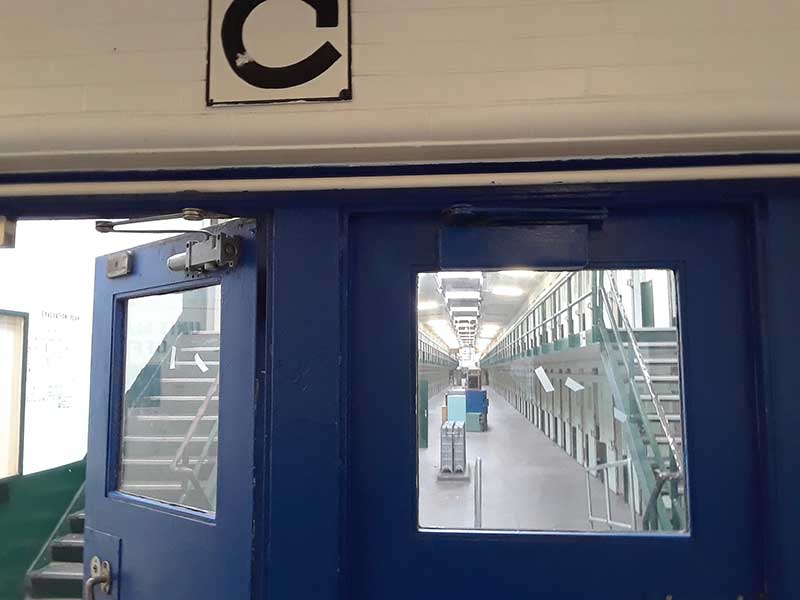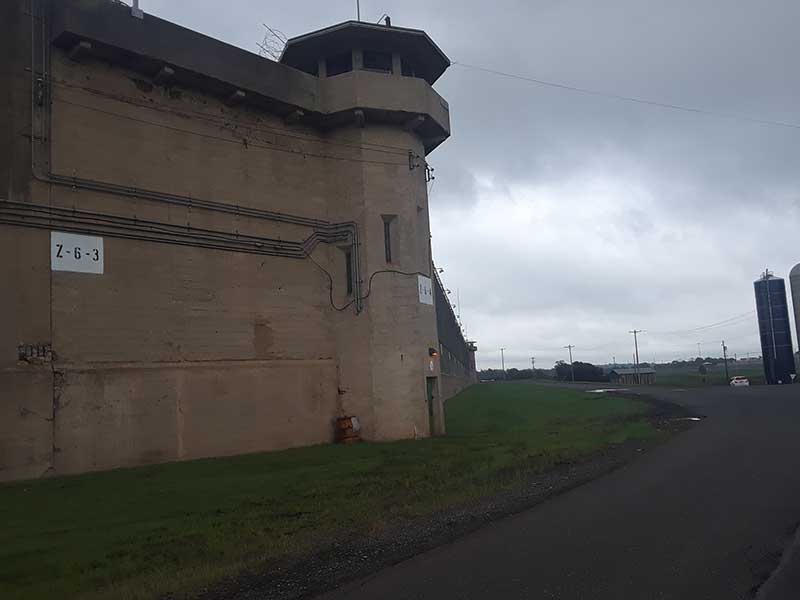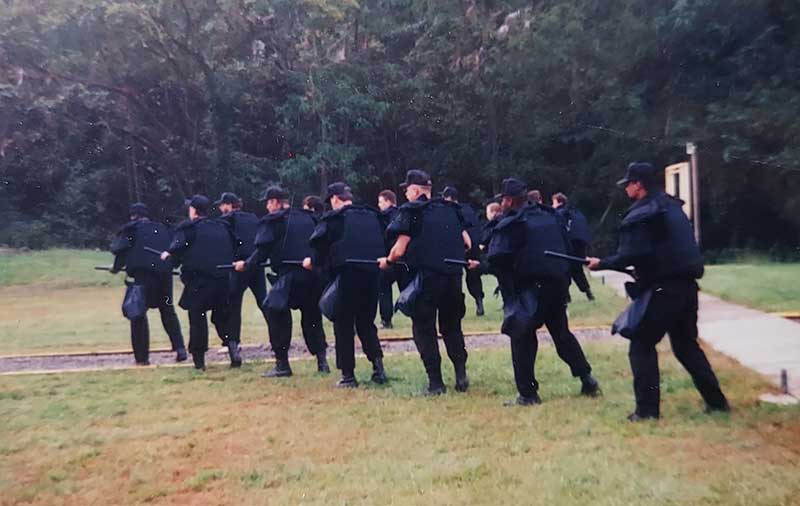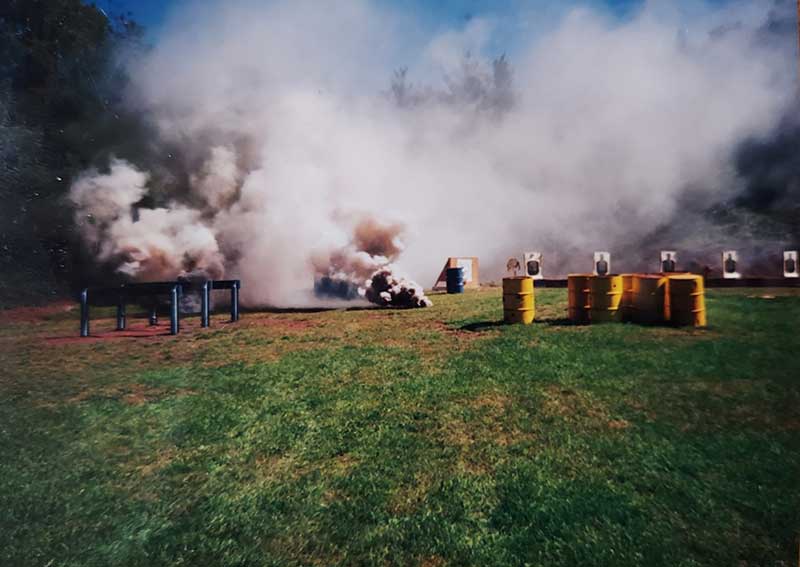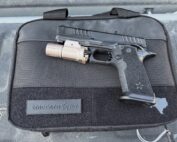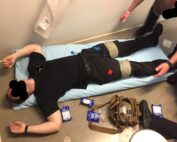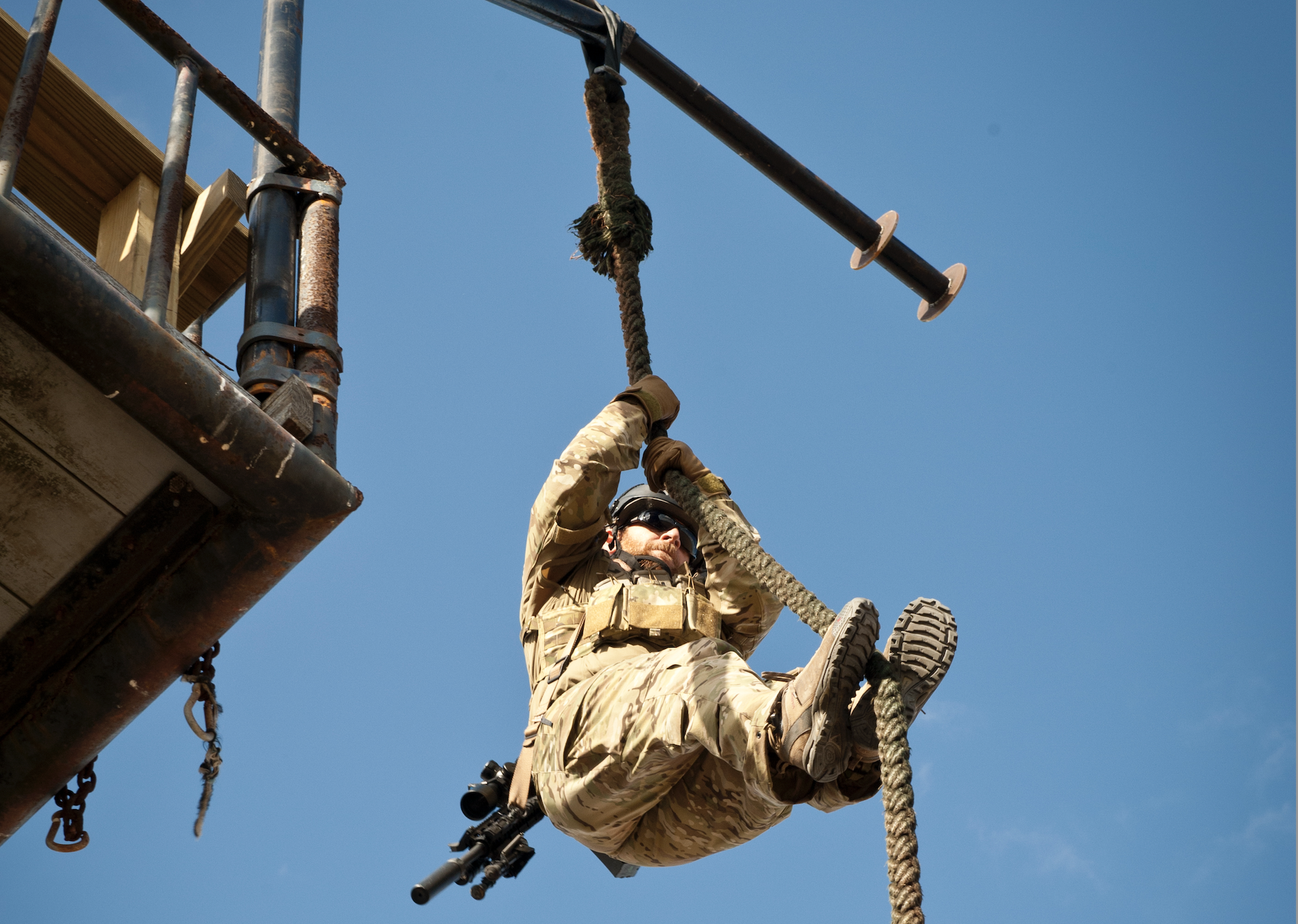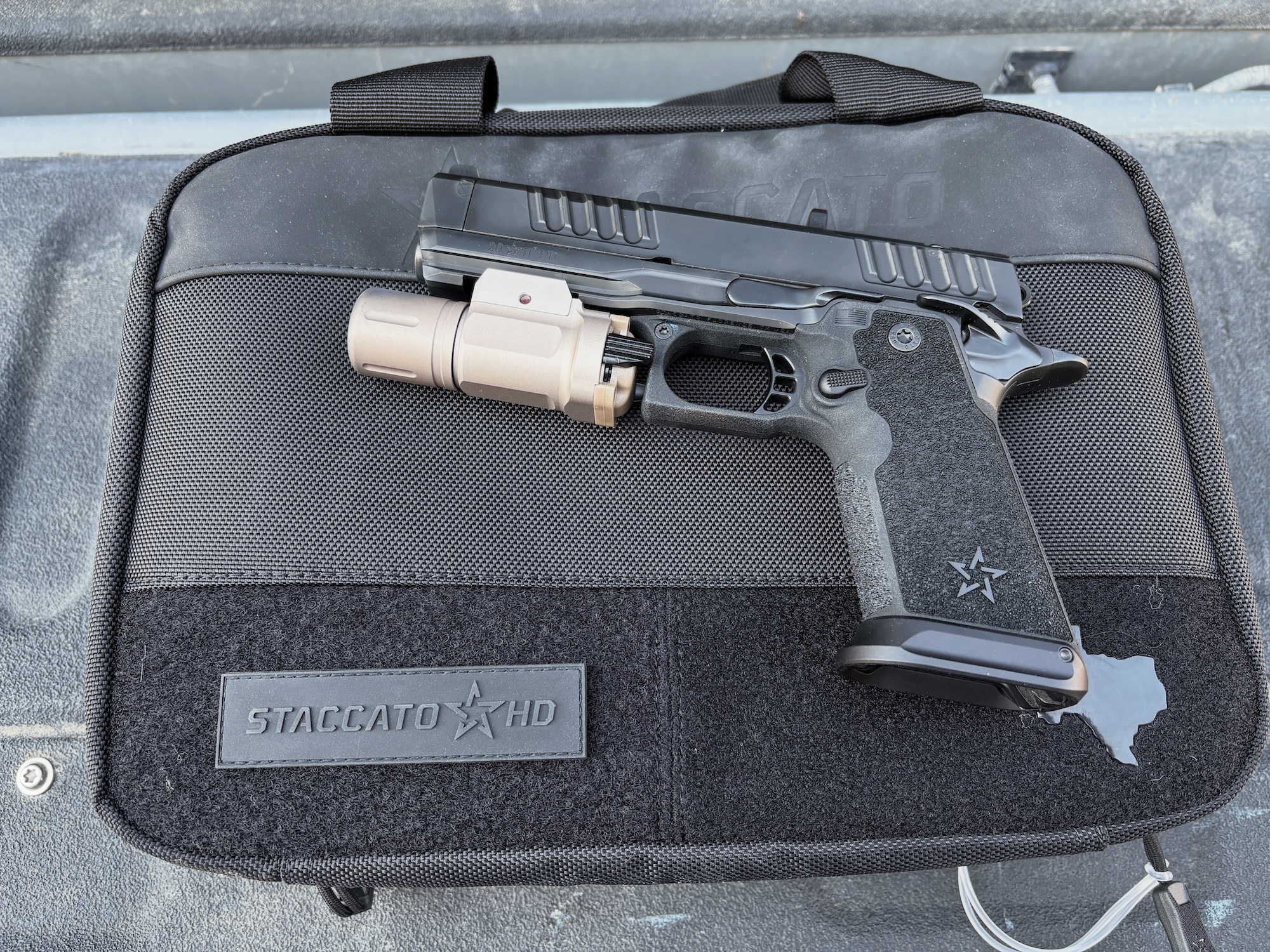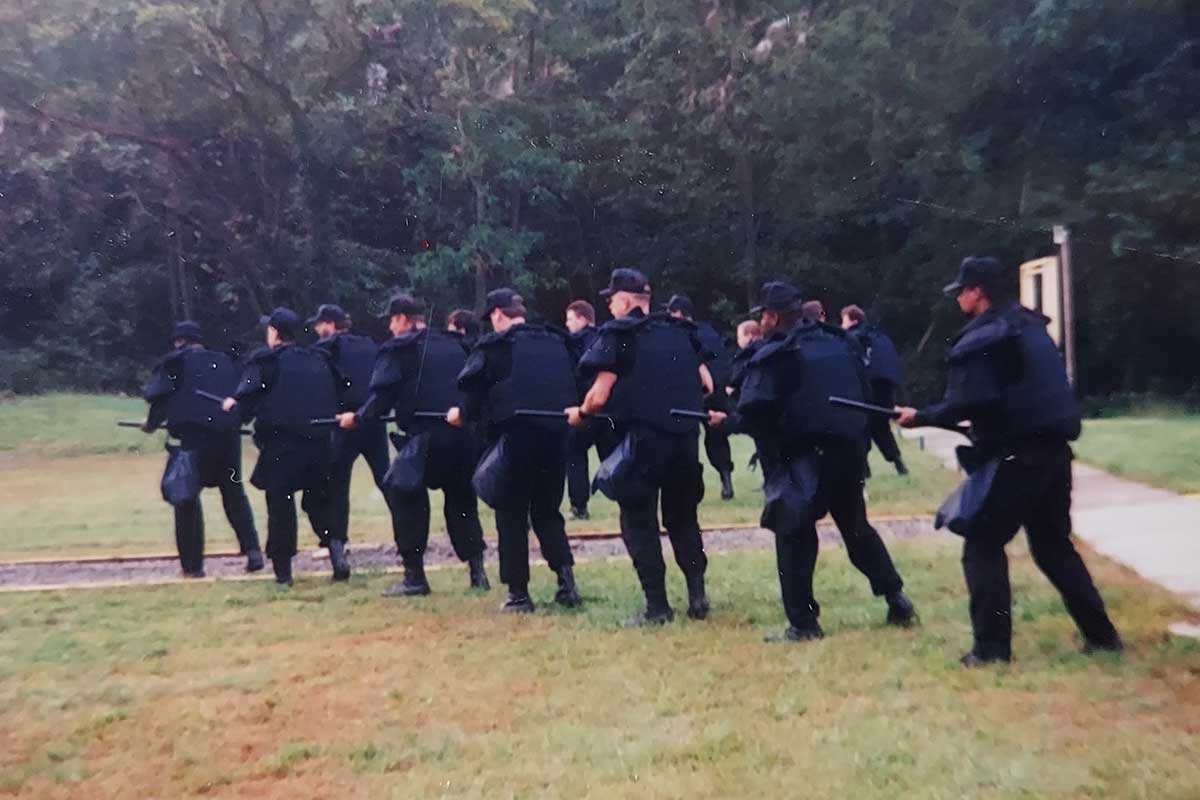
AC-122220-CivilUnrest-CU-7-800
When people think of prisons, one of the images that often first comes to mind is a riot. To be honest, this is not an unrealistic line of thinking because unrest does tend to occur quite a little bit in our correctional facilities on a regular basis. A literal war rages in America’s back yard that few even know about.
As a matter of fact, this unrest is such an ingrained theme that most facilities have TTPs in place (Tactics, Training, and Procedures) to deal with these crises. They also have tactical teams to address such events.
All team members were trained in and could
deploy chemical munitions but were trained to figure
out the safe level of chemical munitions that
could be deployed in an enclosed area.
For a number of years, I was involved in a tactical team in the State Correctional Institution (SCI) where I worked. I also instructed correctional staff in riot control tactics. It was a very large facility, the largest in my state, and one of the largest in the united states. Over 4,000 inmates were housed there. When things happened, they tended to be very intense.
Our Special Teams were broken down into a few elements: There was CERT (Corrections Emergency Response Team), which was very similar to a SWAT team in a police department. Our mission encompassed a number of duties, which included riot control in the prison, and responding to any manner of disturbances to include cell extractions of recalcitrant inmates. We also responded to incidents in the local community. One such event was when a tornado partially destroyed a nearby town and they needed our help to prevent looters from taking a toll.
There was also a Hostage Rescue Team (HRT), whose duties included close quarters battle and rescuing hostages from hostile forces.

An exercise yard for a cell block in the new prison. These yards are compartmentalized, which helps contain problems and adds to security.
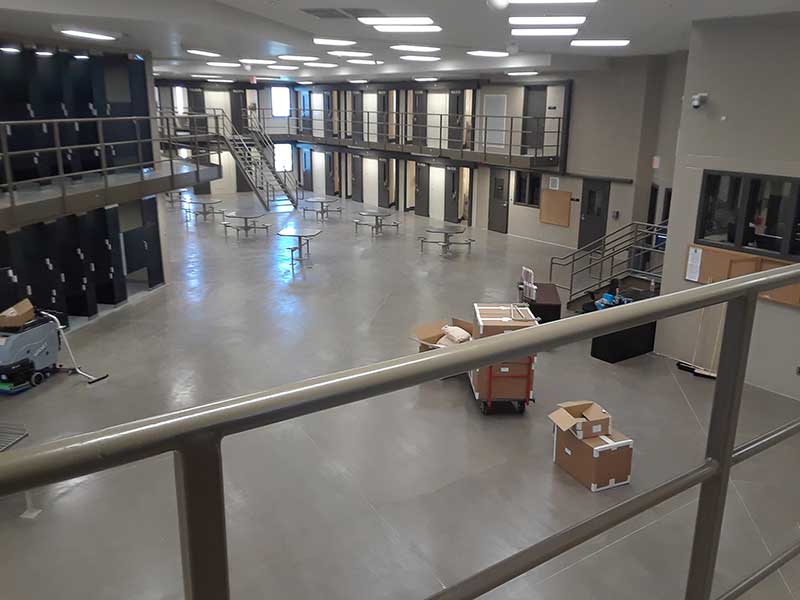
A new cell block, which is obviously smaller than the old prison. There are around 220 inmates per cell block.
CERT Rifle Specialist Team (CRST) was comprised of Tactical Rifle Specialists (Snipers), of which I belonged to. Our mission was to conduct reconnaissance and support and also to oversee CERT/HRT missions, engaging hostile targets as required.
We worked hand-in-hand with CERT/HRT, often guiding them into a crisis site from our vantage point. We could see things that they could not, and were basically the eyes and ears of not only the teams, but also the command element, providing them with up-to-the-second intelligence. Every CERT operation was supposed to be overseen by snipers, which ensured that they were protected from attack.
Within CERT there were other specialists, such as Chemical Munitions Specialists. They were trained and practiced in delivering chemical munitions during incidents. All team members were trained in and could deploy chemical munitions but were trained to figure out the safe level of chemical munitions that could be deployed in an enclosed area.
We deployed chemical munitions via several delivery systems, including a launcher on our Remington 870 shotguns, hand-thrown, a 37mm gas launcher, and the Protecto-Jet (it resembled a large fire extinguisher with a nozzle at the end and could launch a cloud of OC or CS up to 50 feet).
Naturally, rioters usually did not want to
be moved, and would resist our endeavors.
The two main chemicals that we used were CS (“tear gas”) and OC (Oleoresin Capsicum, or “Pepper Spray”). OC was preferable for deployment indoors because it was very easy to decontaminate. We tried to mostly use the CS outside. The CS could be lethal in high doses inside and was normally deployed via a variety of grenades.
The team also utilized HC (Smoke) and a variety of flash-bang (distraction) devices.
The agency also had available lethal options such as shotguns for CERT. The snipers used the Remington 700 PSS in .308 and the Colt AR-15A2 HBAR. HRT used the H&K MP-5 and later transitioned to M-4 carbines. Our handguns were .38 caliber S&W revolvers.
A number of squad members on each CERT team would be armed with 36-inch riot batons while dressed in body armor, helmets (complete with face shields), and gas masks. This provided a less lethal option.
We utilized riot control formations for CERT to move people from one area into another. Training consisted of multiple formations, but in reality, things were kept fairly simple, with the Line Formation and the Wedge Formation being used the most. Naturally, rioters usually did not want to be moved, and would resist our endeavors.

Continuous Discharge CS grenades. One squad member could carry several, and they are a great tool for clearing areas outdoors.

Tools of the trade. A 36-inch polycarbonate riot baton and two CS grenades. Riot baton offers a less lethal option when dealing with rioters.
That’s where the chemical munitions would come in handy. The entire premise behind “chems”, as we called them, was this: to make an area uncomfortable. So uncomfortable that the people there wanted to leave.
When deploying chemicals, it is important to leave an avenue open for the people whom you’re trying to move to be able to leave. Typically, you prep the area you want them to move into by having staff present to take them into custody or lock them up (in our case, possibly into cells).
Many tactics of prison riot control translates directly onto the street, as people are basically people, no matter what environment they’re in. The mission is often very similar; to disperse hostile people or take them into custody, making the scene safe.
The first thing riot teams do before taking any action is what is called a Show of Force. We show up and let people know that we are here and we are prepared to act. Much of the time, this show of force is sufficient to make the hostile people decide that it’s not a good day to fight.
In the prison, when an incident transpired, our
first response was to flood an area with staff
On the street, you may want to clear out a town square or a street. Utilizing chemical munitions, you can make that area very uncomfortable, convincing most of the people to leave. The few that remain can be engaged with team members armed with riot batons or, if necessary, firearms.
In the prison, I responded to hundreds of incidents over the years, and it would be impossible for me to count exactly how many I dealt with. Things ranging from simple fights, to suicides, stabbings, slashings, murders, and gang fights.
I can tell you precisely how many riots I’ve been involved in, though: Two. And it was two too many!
The thing with tactical operations is that they take time to assemble. And time is very precious when the good guys are in peril.
In the prison, when an incident transpired, our first response was to flood an area with staff as instantly as we could humanly manage. When the call went out, staff raced headlong into the crisis zone, and 99.9% of the time, that quelled the disturbance. We’d take the bad actors into custody.
When CERT came into play was the very small percentage of time where a massive response wasn’t adequate. Or the times when an inmate was barricaded in his cell, in which case we’d try to negotiate a peaceful resolution. When that did not happen, CERT went in and forcibly took charge.
Both times I was in a riot, they occurred when we lost control of a cell block due to inmates attacking the staff therein. Our cell blocks were large. As in, 200 yards long, close to 400 cells, and up to 750 inmates. Typically staffed with five to eight officers officers. Yeah, that is pretty big!

The interior of a cell in the old prison. A 6×12-foot space that housed two inmates. Imagine a six-man extraction team battling with two armed inmates in that tiny space.
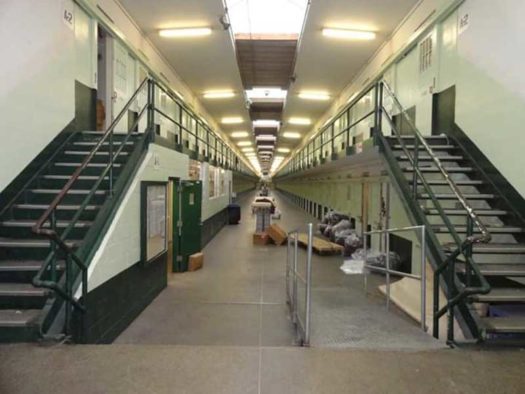
Prison cell block was 200 yards long, containing close to 400 cells, and housing up to 750 inmates. Would you walk that beat unarmed?
On both occasions, all available staff went onto the cell block and engaged in a massive brawl with the inmates who were acting up. On one occasion, I was convinced that I was about to die. Things looked bad. As I entered the cell block, inmates were screaming, “Kill the white motherfuckers!” They were throwing trash barrels at us from the top tier and throwing burning items as well. Somehow, by the grace of God, I came out of it without a scratch. Don’t ask me how.
Had we not been able to gain control, CERT and other teams would have been activated. The problem with that is that it gives the bad people time to fortify and organize, and ups the ante for the hostages who are trapped inside.
On one occasion, inmates on a cell block refused to lock into their cells and would not allow officers to leave the block. Our deputy superintendent at the time advised the inmates that he was activating CERT and that he had no problem sending them in to deal with the inmates.
When the inmates heard that CERT was going to come in and retake the cell block, they decided that maybe it was better to lock into their cells voluntarily. I believe they made a good decision because we were more than willing to come in there and clean it out.
police departments are being hamstrung, in
that they are not allowed to act in a way that
effectively quells the violent rioters
These days, with rampant rioting on the streets, riot control has come to the public eye in a huge way. Unfortunately, many police departments are being hamstrung, in that they are not allowed to act in a way that effectively quells the violent rioters. Political Correctness and possibly an aversion to lawsuits seem to be the major factors in these decisions.
Apparently, the intent is to mollify the anarchists, hoping the problem will magically disappear (it’s not going to).
Unfortunately, allowing this cancer to spread unchecked emboldens the anarchists and actually encourages more violence in the future because violent rioters show up expecting to be able to act out and not be stopped. The violence spirals, sadly.
Riot control is definitely effective, especially when balanced with less lethal and lethal force options. The deciding factor is whether or not the troops are allowed to succeed.


 (No Ratings Yet)
(No Ratings Yet)